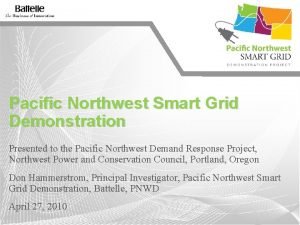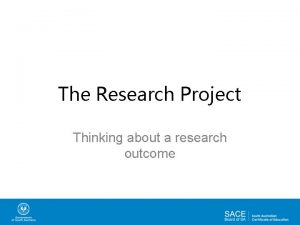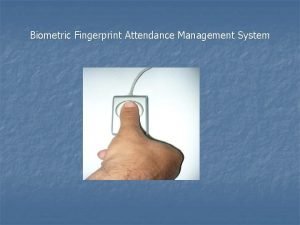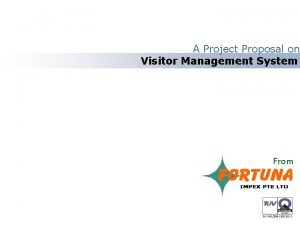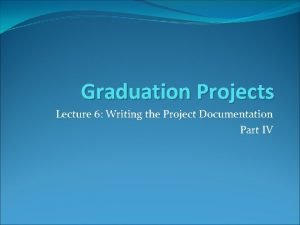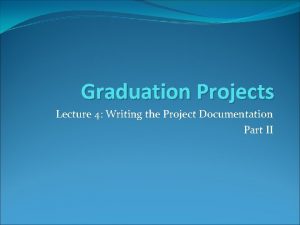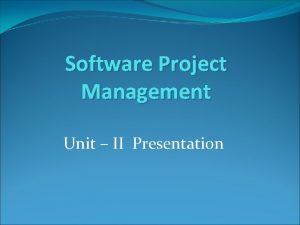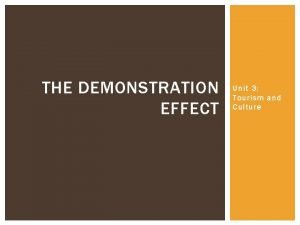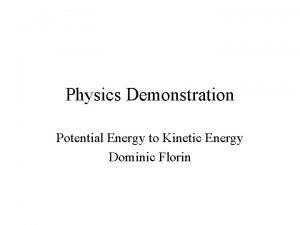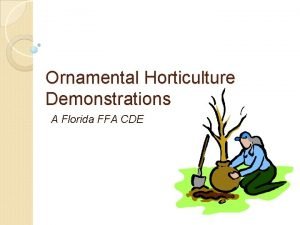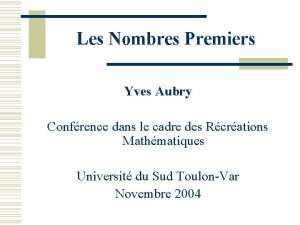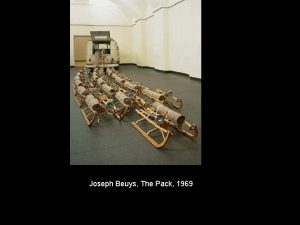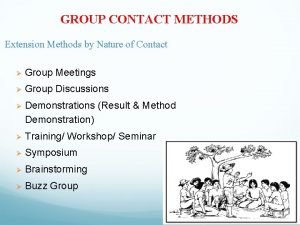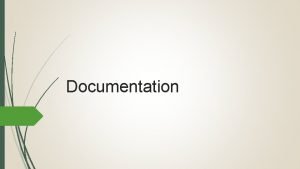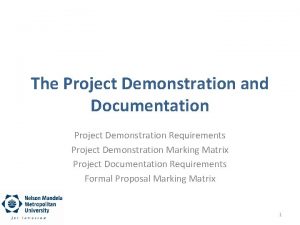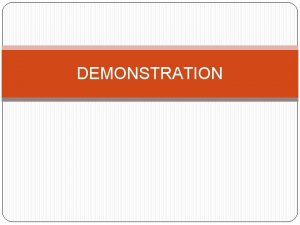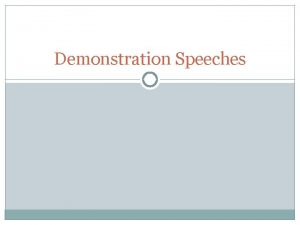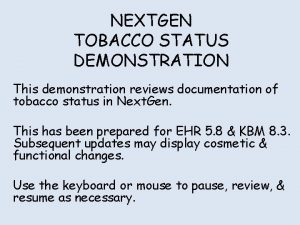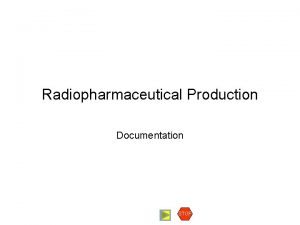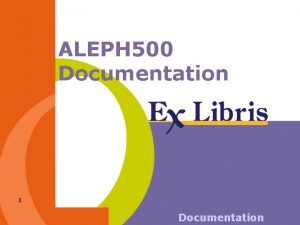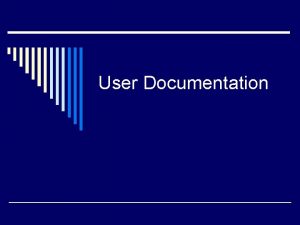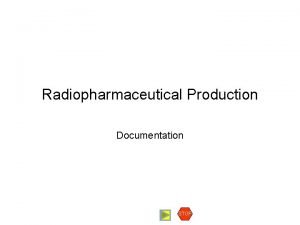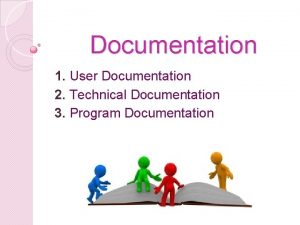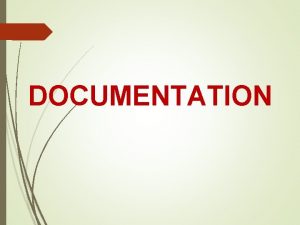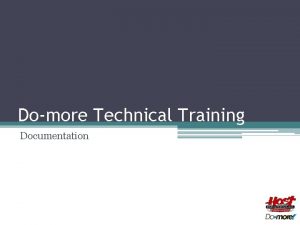Finalized Demonstration Project on SmokeAerosol Forecasting Outcome documentation


![Reverse Domain Filling [Sutton et al, 1994] involves: 1) Initialization of uniform grid of Reverse Domain Filling [Sutton et al, 1994] involves: 1) Initialization of uniform grid of](https://slidetodoc.com/presentation_image_h2/d6951b7aff5560e5fa2f128ea971ffef/image-3.jpg)














- Slides: 17

Finalized Demonstration Project on Smoke/Aerosol Forecasting – Outcome (documentation, data sets, demonstration service) R. Bradley Pierce National Oceanic and Atmospheric Administration (NOAA) National Environmental Satellite, Data and Information Service (NESDIS) Center for Satellite Applications and Research (STAR) CEOS Atmospheric Composition Constellation Meeting (ACC-5) - 30 -31 March 2010, CSA, Montreal, Canada

CEOS ACC Smoke/Aerosol Forecast Demonstration The Smoke/Aerosol Forecasting Pilot Project is one of three projects within the ACC demonstration projects. The goal of this prototype is to demonstrate that a constellation can be developed using several satellites synergistically to characterize the global distribution of fire occurrences and aerosol distributions. Under the ACC Smoke/Aerosol Forecasting Pilot Project NOAA NESDIS/STAR and CIMSS* developed an automated global fire and aerosol forecasting tool that included acquisition and processing of MODIS (Terra and Aqua), GOES (East and West) AOD retrievals, MODIS fire detection, and NOAA GFS Grib 2 data for producing nearreal-time aerosol forecasts during March-December 2008. Real-time 48 hr global (1 ox 1 o) and regional (0. 1 ox 0. 1 o) degree Aerosol Optical Depth (AOD) forecasts for Beijing, China and the Great Lakes Region were conducted at CIMSS. *Cooperative Institute for Meteorological Satellite Studies (CIMSS) at University of Wisconsin-Madison
![Reverse Domain Filling Sutton et al 1994 involves 1 Initialization of uniform grid of Reverse Domain Filling [Sutton et al, 1994] involves: 1) Initialization of uniform grid of](https://slidetodoc.com/presentation_image_h2/d6951b7aff5560e5fa2f128ea971ffef/image-3.jpg)
Reverse Domain Filling [Sutton et al, 1994] involves: 1) Initialization of uniform grid of trajectories at time T 2) Computing back trajectories during T-n*dt 3) Sampling satellite observations of aerosol optical depth (AOD) 4) Remapping AOD back to initial time T Satellite Obs Back Trajectories Uniform Grid Time=T-n*dt ………………. . Time=T Sutton R. T. , H. Maclean, R. Swinbank, A. O'Neill, and F. W. Taylor, 1994: High resolution stratospheric tracer fields estimated from satellite using Lagrangian trajectory calculations. J. Atmos. Sci. , 51, 2995– 3005. Li, C. , N. A. Krotkov, R. R. Dickerson, Z. Li, K. Yang, and M. Chin (2010), Transport and evolution of a pollution plume from northern China: A satellite-based case study, J. Geophys. Res. , 115, D 00 K 03, doi: 10. 1029/2009 JD 012245.

CEOS RDF AOD FX valid September 14, 2008

Forecast Evaluation: Comparison between the RDF forecast and Aeronet AOD (6122 coincident pairs from February 12 through December 31, 2008) • The overall correlation between Aeronet and the RDF forecast is 0. 497 • RDF Forecast has low bias of 0. 04 (25% of mean) • Comparison of the Aeronet and RDF histograms shows that the mean low bias primarily arises due a higher frequency of forecasted AOD values that were less than 0. 01 (Aeronet detection limit)

Forecast Evaluation: Aeronet site correlations Site correlations (temporal variations) are generally significantly lower than the overall correlation (geographic and temporal variations). • Only 15% of the Aeronet sites show correlations above 0. 50 (r 2=0. 25) and therefore explain greater than 25% of the observed variability. • Most (42%) site correlations are between 0. 0 and 0. 25 and explain less than 6% of the observed variability.

Forecast Evaluation: MODIS Validation Mean AOD from Daily Terra MODIS Level 3 (MOD 08_D 3) during the period from March. December 2008 were used to validate the large-scale features in the 48 hr RDF AOD forecasts. Daily and monthly mean and anomaly correlations and mean biases were computed both globally and for seven geographical domains: Tropics: N America: S America: Africa: Europe: S Asia: N Asia: 180 W - 180 E, 24 S - 24 N 180 W - 45 W, 15 N - 90 N 90 W - 30 W, 60 S - 15 N 30 W - 60 E, 60 S - 40 N 15 W - 30 E, 40 N - 75 N 60 E - 165 E, 10 S -40 N 30 E - 180 E, 40 N - 85 N • On average, only the monthly mean S Asian, Tropical, African, and Global correlations are greater than 0. 7 (explain 50% of the observed variance). • However, no region shows mean anomaly correlations greater than 0. 6 which is the threshold for useful quantitative forecast skill.

Conclusions of ACC Smoke/Aerosol RDF Forecast Evaluation • Based on the Aeronet and MODIS validation we conclude that 48 hr RDF AOD forecast does not show sufficient quantitative AOD forecast skill to warrant further study. • Existing trajectory based MODIS AOD forecast tools such as the IDEA aerosol forecasting tool [Alsaadi et al. , 2005] provide qualitative information on aerosol transport patterns, and may represent the extent of useful forecast information provided by the satellite retrievals and trajectory tools. 1 Real-time Air Quality Modeling System • Utilization of satellite based AOD retrievals to provide quantitative AOD forecast skill will require assimilation within comprehensive global and regional aerosol forecasting models. Useful Skill Range of April 2008 48 hr RDF AC Scores RAQMS 1 (2 x 2) April 2008 global 850 mb Aerosol forecast skill with (solid) and without (dash) MODIS assimilation.

IDEA-International IDEA International (IDEA-I) will provide a tool for linking the ground-based and satellite capabilities to support international air quality forecasting activities under GEO. IDEA-I will be released as part of the International Moderate Resolution Imaging Spectroradiometer (MODIS) Atmospheric Infrared Sounder (AIRS) Processing Package (IMAPP), and its operational follow-on the International Polar Orbiter Processing Package (IPOPP). Under the auspices of GEO, the U. S. EPA is developing AIRNow-International, (AIRNow-I) which will be a network of systems that will provide real-time data-sharing, processing and distribution of global air quality surface observations based on the highly successful AIRNow program. IDEA-I will provide interoperability between the US EPA’s AIRNow. International data distribution system and IMAPP. Schematic illustration of how IDEA-I will be used to link MODIS satellite data and trajectory forecasting capabilities to AIRNow-I IDEA-I Demonstrations The first demonstration, slated for Spring-Summer, 2010, will be conducted during the 2010 Shanghai World Exposition. The proposal team is collaborating with the Korea Meteorological Administration (KMA) Asian Dust Research Laboratory and the Eastern China Normal University (ECNU) during this demonstration.

IDEA-I Web Portal http: //idea-i. ssec. wisc. edu/

March 2010 Asian Dust Event Advisory is issued when the hourly averaged dust(PM 10) concentration is expected to exceed 400 mg/m 3 for over 2 hours. PM 10 network at KMA Baengnyeongdo(102) Inchon(112) Gwanaksan(116) Anmyeondo(132) Gunsan(144) Heuksando(169) Gosan(185) http: //web. kma. go. kr/eng/weather/asiandust/intro. jsp

March 2010 Asian Dust Event Warning is issued when the hourly averaged dust(PM 10) concentration is expected to exceed 800 mg/m 3 for over 2 hours. Major Dust Event PM network at KMA March 20, 10 2010 Baengnyeongdo(102) Inchon(112) Gwanaksan(116) Anmyeondo(132) Gunsan(144) Heuksando(169) Gosan(185) http: //web. kma. go. kr/eng/weather/asiandust/intro. jsp

KMA surface analysis 1, station visibility and PM 10 (12 KST March 19, 2010) 1 KMA Regional Data Assimilation and Prediction System (RDAPS) IDEA-I 1 -hour Forecast

KMA surface analysis 1, station visibility and PM 10 (00 KST March 20, 2010) 1 KMA Regional Data Assimilation and Prediction System (RDAPS) IDEA-I 13 -hour Forecast

KMA surface analysis 1, station visibility and PM 10 (12 KST March 20, 2010) 1 KMA Regional Data Assimilation and Prediction System (RDAPS) IDEA-I 25 -hour Forecast

KMA surface analysis 1, station visibility and PM 10 (00 KST March 21, 2010) 1 KMA Regional Data Assimilation and Prediction System (RDAPS) IDEA-I 37 -hour Forecast

CEOS ACC Smoke/Aerosol Forecast Milestones March-December, 2008: 48 hr Aerosol Optical Depth (AOD) forecasts for global and regional (Beijing, China and the Great Lakes Region) domains were conducted at CIMSS January-July, 2009: Evaluation of the CEOS ACC Smoke/Aerosol Forecast Skill July, 2009: NOAA/NESDIS/STAR submitted Concept Proposal for follow-on activity “Infusing satellite Data into Environmental Applications-International (IDEA-I)” to GEO Call for Earth Observations in Decision Support 1 August, 2009: Final Report “Evaluation of CEOS ACC Smoke/Aerosol Forecasting Pilot Project” delivered to NASA Demonstration Lead (Jack Fishman, NASA/La. RC) and CEOS SEO (Brian Killough, NASA/La. RC) November, 2009: IDEA-International Concept accepted as GEO Type III 2 February, 2010: Submitted Final Proposal for IDEA – International in response to the GEO Call For Type III Full Proposals (NOAA/NESDIS/STAR Lead) March, 2010: Beta version of IDEA-I web portal 3 established in support of KMA Asian Dust Forecasting 1 http: //www. earthobservations. org/geoss_call_dsp. shtml 2 Type III projects are for organizations that have successfully applied Earth observations to their decision making and want to demonstrate and share their application with other organizations 3 http: //idea-i. ssec. wisc. edu/
 Pacific northwest smart grid demonstration project
Pacific northwest smart grid demonstration project Research project outcome example
Research project outcome example Online gym management system
Online gym management system Fingerprint attendance management system
Fingerprint attendance management system Visitor management system project
Visitor management system project Graduation project documentation
Graduation project documentation Graduation project documentation
Graduation project documentation Team visitor infomedia
Team visitor infomedia Strategic assessment in software project management
Strategic assessment in software project management Example of demonstration effect in tourism
Example of demonstration effect in tourism Demonstration effect meaning
Demonstration effect meaning Kinetic energy demonstration
Kinetic energy demonstration Florida ffa cde
Florida ffa cde Techniques of demonstration
Techniques of demonstration Nombre premier le plus grand
Nombre premier le plus grand Joseph beuys auschwitz demonstration
Joseph beuys auschwitz demonstration Advantages of individual contact method
Advantages of individual contact method Objectives of school health programme
Objectives of school health programme
